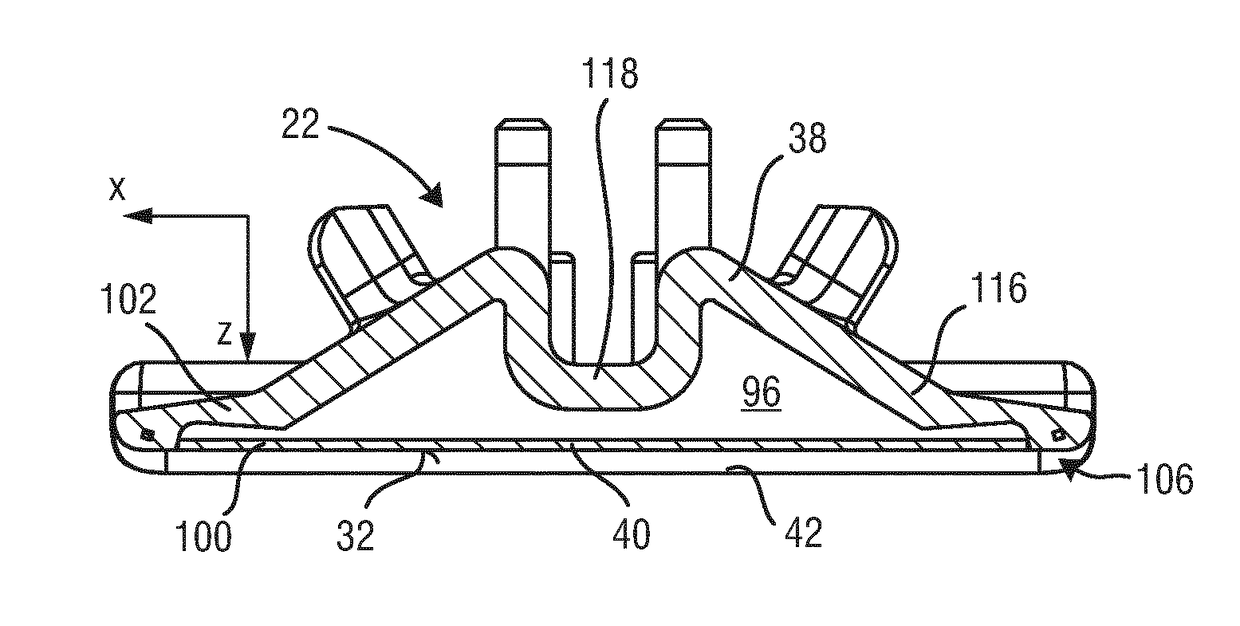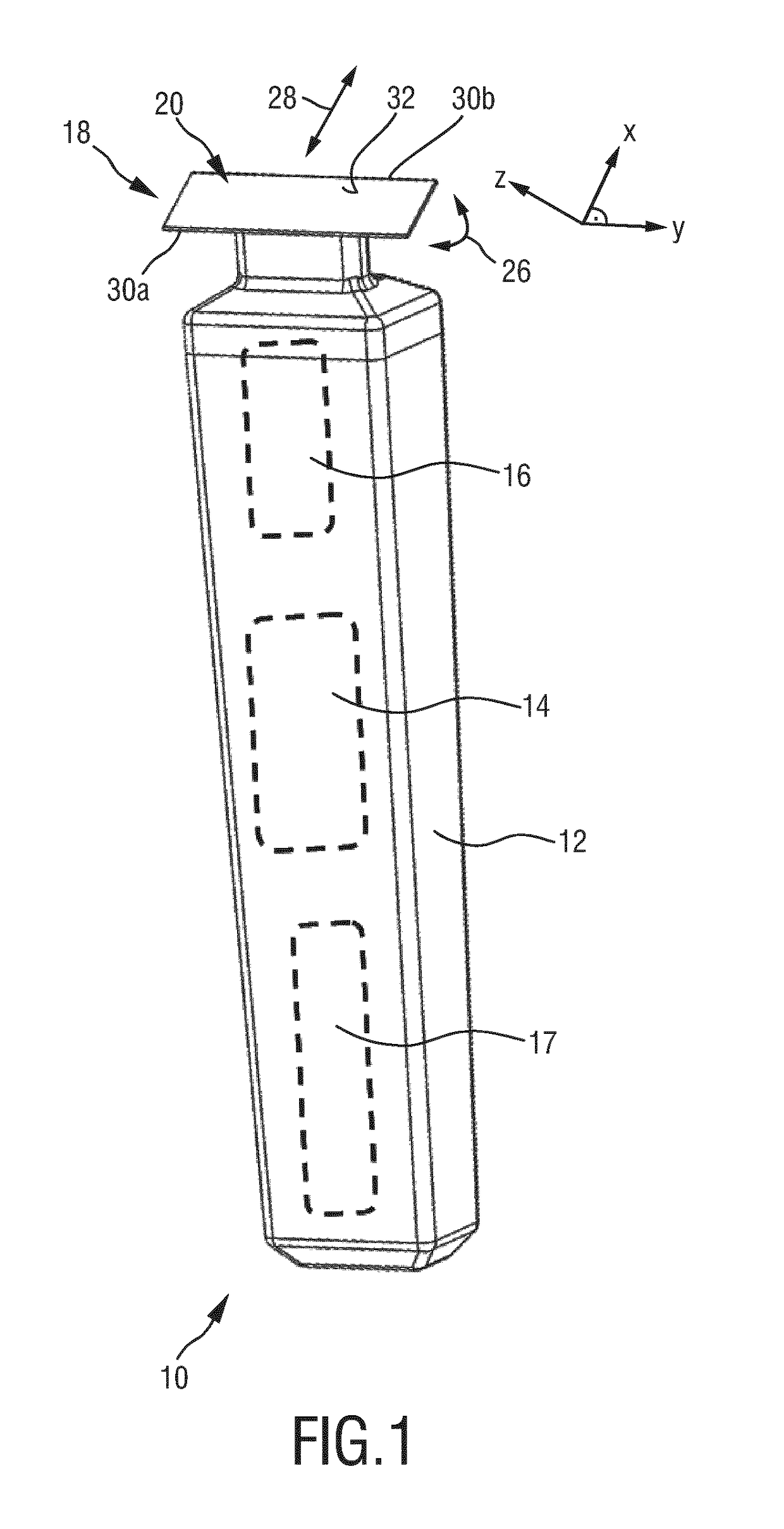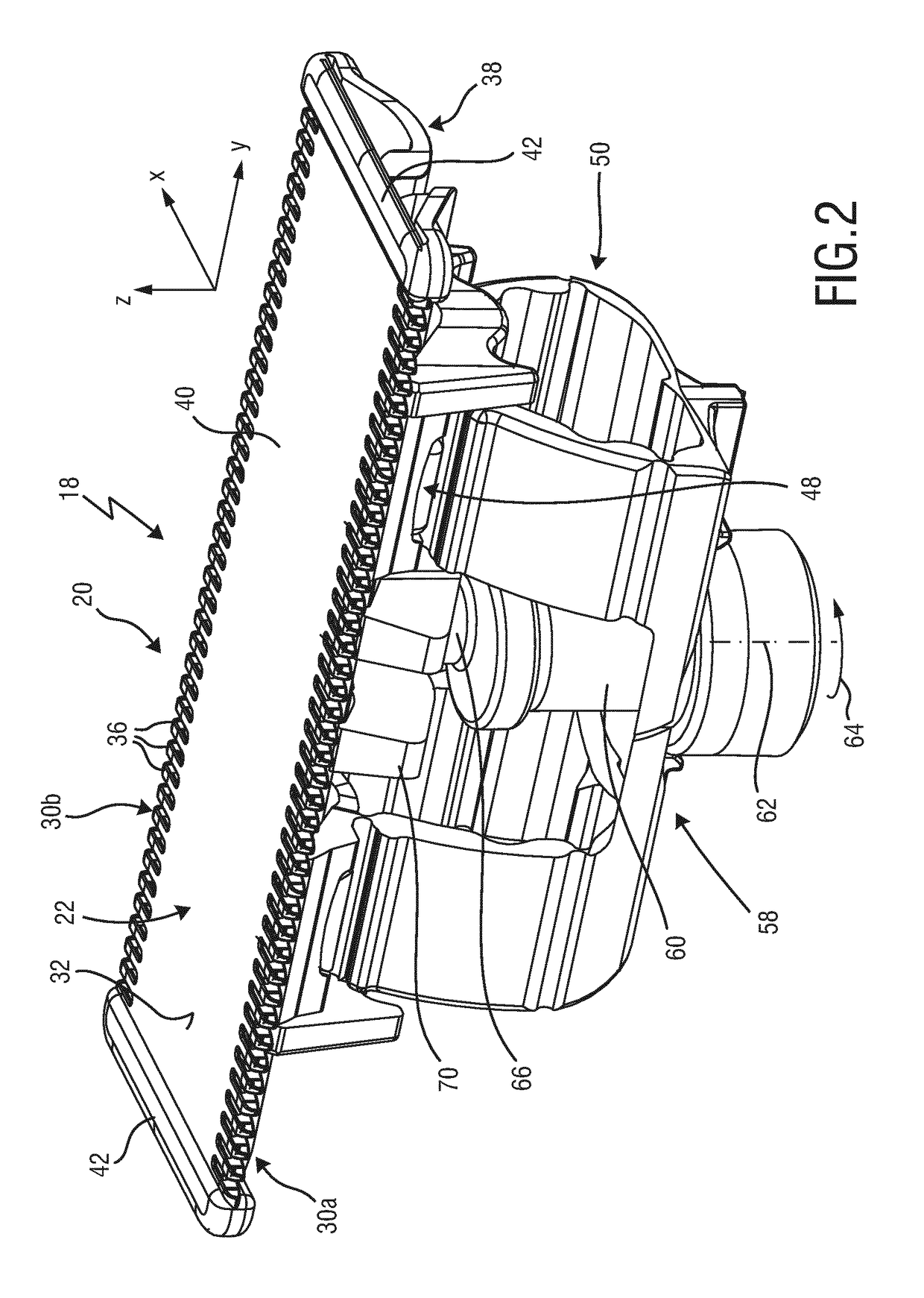Blade set, hair cutting appliance, and related manufacturing method
a technology of blade set and blade set, which is applied in the direction of metal working devices, etc., can solve the problems of common electric razors are not particularly suited for shaving, and reducing the efficiency of shaving all but the shortest and stiffest of hairs, so as to reduce the time required for shaving operations, improve operating performance, and improve shaving experien
- Summary
- Abstract
- Description
- Claims
- Application Information
AI Technical Summary
Benefits of technology
Problems solved by technology
Method used
Image
Examples
Embodiment Construction
[0091]FIG. 1 schematically illustrates, in a simplified perspective view, an exemplary embodiment of a hair cutting appliance 10, particularly an electric hair cutting appliance 10. The cutting appliance 10 may comprise a housing 12, a motor indicated by a dashed block 14 in the housing 12, and a drive mechanism or drivetrain indicated by a dashed block 16 in a housing 12. For powering the motor 14, at least in some embodiments of the cutting appliance 10, an electrical battery, indicated by a dashed block 17 in the housing 12, may be provided, such as, for instance, a rechargeable battery, a replaceable battery, etc. However, in some embodiments, the cutting appliance 10 may be further provided with a power cable for connecting a power supply. A power supply connector may be provided in addition or in the alternative to the (internal) electric battery 17.
[0092]The cutting appliance 10 may further comprise a cutting head 18. At the cutting head 18, a blade set 20 may be attached to ...
PUM
 Login to View More
Login to View More Abstract
Description
Claims
Application Information
 Login to View More
Login to View More - R&D
- Intellectual Property
- Life Sciences
- Materials
- Tech Scout
- Unparalleled Data Quality
- Higher Quality Content
- 60% Fewer Hallucinations
Browse by: Latest US Patents, China's latest patents, Technical Efficacy Thesaurus, Application Domain, Technology Topic, Popular Technical Reports.
© 2025 PatSnap. All rights reserved.Legal|Privacy policy|Modern Slavery Act Transparency Statement|Sitemap|About US| Contact US: help@patsnap.com



